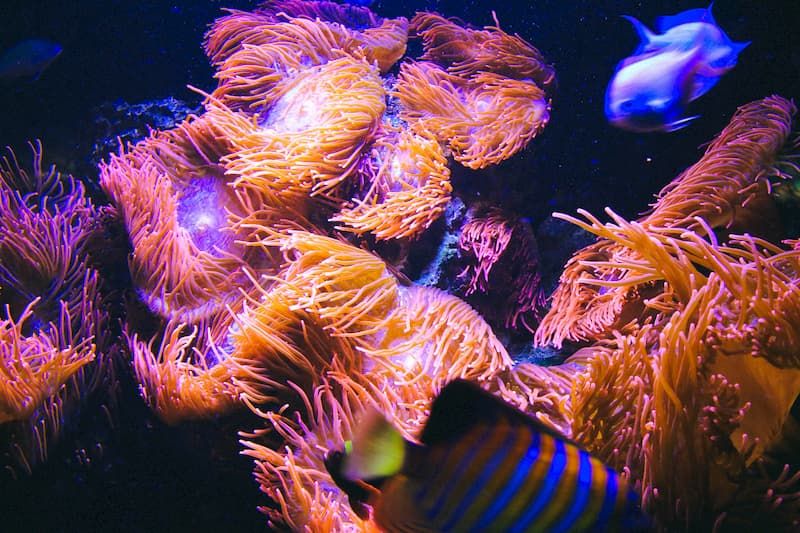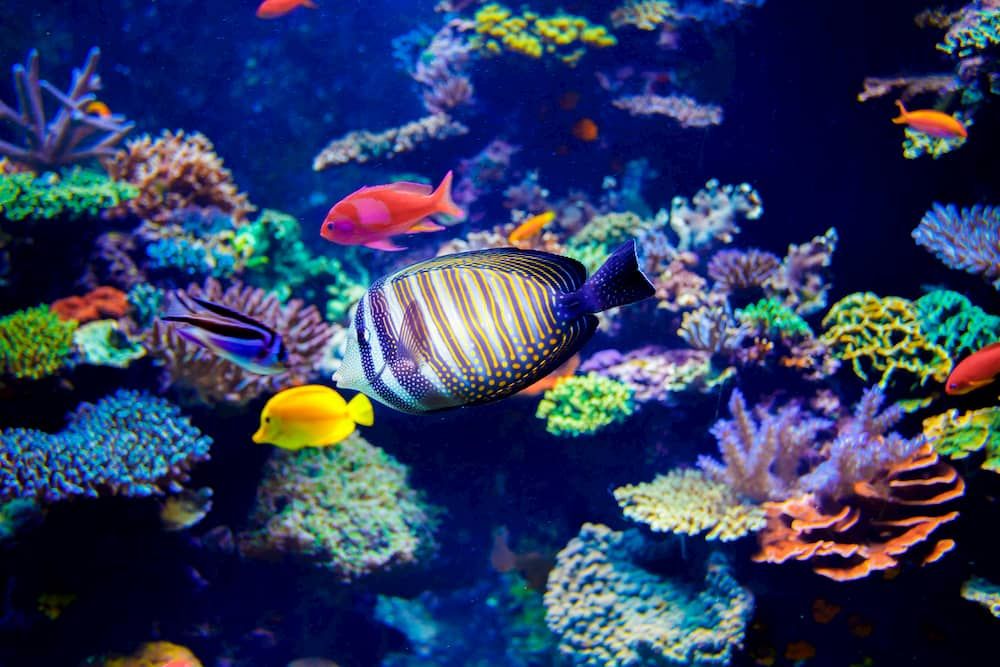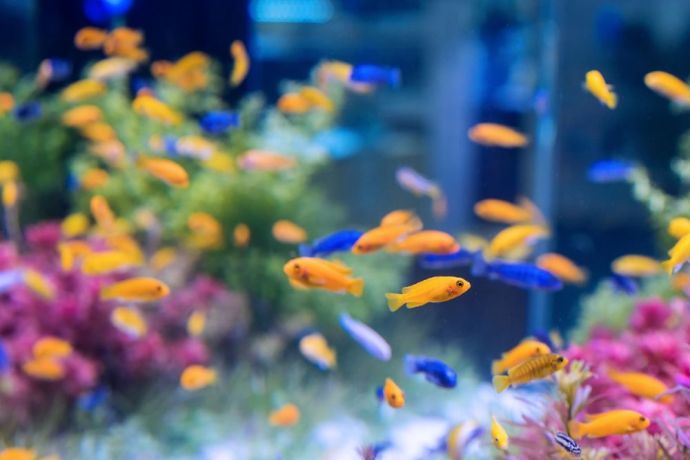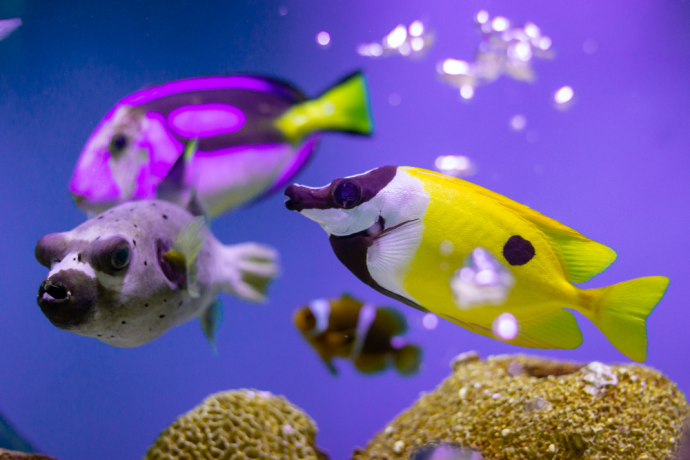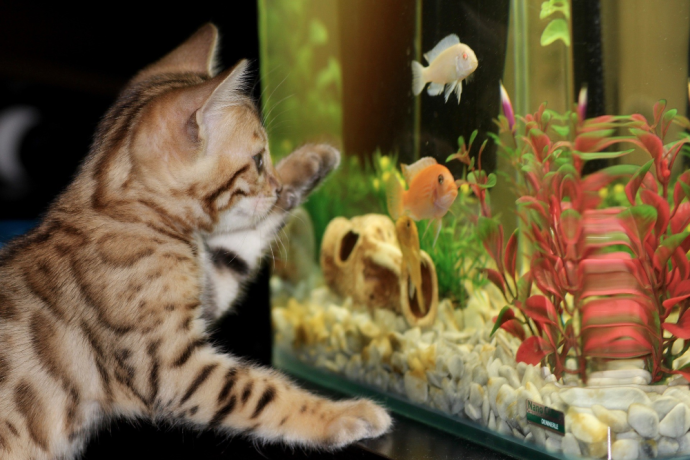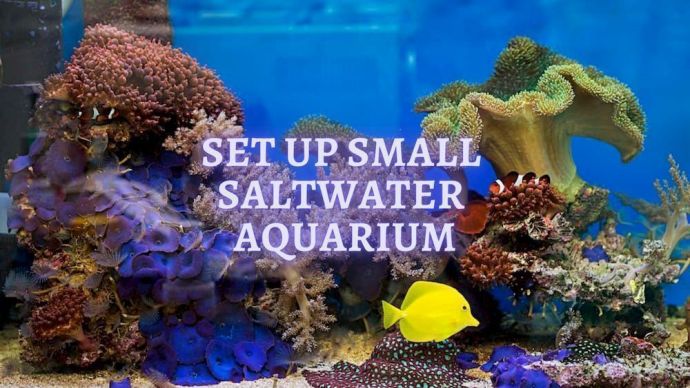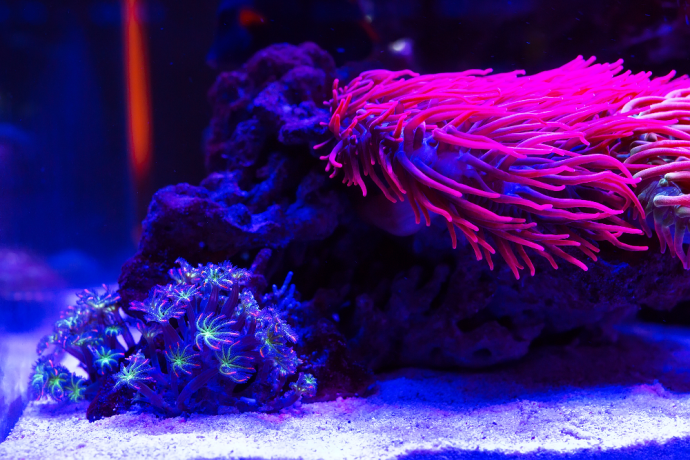How to raise PH in Saltwater Aquarium?
Written by:
Author: Alina Andreeva
Alina A. is a professional writer, editor, and pet-lover. She has published over 50 articles on how to care for pets properly. Alina has been writing articles for 3 years, so she has considerable experience in this niche. Her natural curiosity helps her to expand her knowledge and learn new pet care life hacks, which will make your life much easier.
View all 79 articlesLearn about our editorial process and veterinary review board.
Viewed: 167
Updated on: 02/22/2023
When keeping an aquarium full of fish, ensuring your pets are always comfortable is essential. Many people think that all they have to do is collect an array of fish, put them in a tank, and keep them fed. However, there is so much more to the craft than that! Of course, fish need a steady and proper supply of food. Every species has its own favored diet, so it is crucial to research that information before feeding. It can help select an array of fish that all like similar food sources to make this routine easier.
However, it is essential to realize that primary tank conditions come into play too. Not only do the fish need to be well-fed, but they need to be happy in the environment that you are providing. This includes keeping them at the ideal water temperature and scale of acidity. Again, much like the food, each fish species prefers a different PH level and water temperature. This often depends on which part of the world they originate from. For example, fish native to Iceland naturally prefer colder temperatures, while tropical fish in sunny climates will be more used to warmer waters.
Once again, it is essential to research the preferred rate of acidity and temperature of the fish you are keeping, ensuring that the tank PH levels and temperature fall within the correct range. The best way to maintain this is to purchase fish that all prefer similar levels or split them across two tanks if they prefer different things.
READ MORE: How hot is too hot for tropical fish aquarium?
So, what do you do when it comes to raising the PH levels in your tank? Of course, if your fish prefers a higher acidity rate, providing that comfortable environment is down to you. This article will look through exactly how you can raise PH levels in your aquarium while also touching on monitoring PH levels, low acidity rate, carbon dioxide, and alkalinity.
What is PH?
PH is a way to measure the acidity of your water and is ranked between 0 and 14. The lower the value, the more acidic; the higher the value, the more alkaline. The alkalinity represents how your water can neutralize the acid and carbon dioxide levels. The better the ability, the higher the PH value. In your tank, you should aim for around 8.3, if possible.
How to raise the pH in reef tank without increasing alkalinity?
The basic rule is that you should be looking to maintain an acidity rate of around 8.3 in your saltwater aquarium. This level can significantly benefit the tank, ensuring positive coral growth, healthy fish, and good metabolic processes. So, how do you raise the PH levels without increasing the alkalinity?
One of the easiest ways to raise PH levels in a tank without touching the alkalinity is to reduce the tank’s carbon dioxide levels.
Remember, humans, breathe out carbon dioxide daily, as do your pets if you have cats and dogs. Therefore, if you keep your fish tank in a small room, tightly sealed space, or poorly ventilated room, the carbon dioxide levels around the tank can be high. The easiest way to fix this is to open a window in the room for a day and monitor any changes in the acidity rate. If the levels go up with the reduced carbon dioxide, you know your problem and can make future efforts to keep the room ventilated better. We appreciate that, during the colder months, keeping a window open all day is hardly a viable option. However, there is equipment that you can invest in to keep the air circulating around your tank, reducing the carbon dioxide build-up.
Using a protein skimmer can create a lot of gas exchange, even more than the natural air around the tank. Therefore, if you believe that there is too much carbon dioxide surrounding the aquarium, you should look to run a tube through the wall to pull fresh air from outside into the skimmer, and this will increase your PH levels. Alternatively, you can remove the CO2 using a scrubber or by investing in special CO2-absorbing equipment to attach to your skimmer. When using this equipment, just be sure to adjust the settings to maintain your PH levels at around 8.3. Sometimes these solutions can actually be too effective and cause the rate of acidity to rise too much.
Finally, you can grow a refugium with macroalgae to increase your PH levels and reduce the amount of carbon dioxide around the tank. This refugium will consume excess CO2 from the water itself, raising the acidity rate. This is one of the preferred methods of PH raising as it occurs naturally and is relatively cost-effective. Refugium also comes with it a healthy array of other benefits, including reducing nitrates and phosphates.
READ MORE: How to Mix Saltwater for Aquarium
How do I raise the alkalinity in my reef tank while also helping the PH levels?
Of course, once you have the desired alkalinity, you want to raise the acidity rate without increasing the other. However, you may find that both your PH and alkalinity levels could do with a boost in some cases. If this is the case, it is essential to know how to raise them safely up to the recommended amounts without compromising the tank’s water.
The first step is to focus on the alkalinity itself. Maintaining this is extremely important in your quest to increase the rate of acidity. In fact, alkalinity is more important to maintain than PH, calcium, salinity, and magnesium in the tank, so it must be taken seriously. The recommended alkalinity level is set at around 8.5 dKH as this gives you enough safe leeway when dosing and testing, meaning that a mistake will not result in disaster. Basically, if the alkalinity levels go up or down slightly from this point, it won’t have devastating effects, and you will have plenty of time to fix it. Suppose you want to raise your alkalinity level to this recommended 8.5. In that case, you can use a simple water and sodium bicarbonate solution with a reef calculator on hand to test the levels until they are perfect. Important note – avoid products that are labeled ‘PH buffer’ as these contain other undesirable elements.
If you want to increase the alkalinity levels while also boosting your PH levels, you can use various supplements. There are plenty on the market that increase calcium, alkalinity, and rate of acidity. A two-part solution of kalkwasser and Soda Ash is proven to reduce carbonic acid and increase PH levels.
What causes low PH in marine aquarium?
Carbon dioxide levels in the water cause the PH levels to drop in a saltwater aquarium. The gas exchange around the tank and the subsequent CO2 levels in the water itself drag the rate of acidity down unless you actively do something about it. While CO2 is directly linked to PH, it is not the only reason that your tank levels may be low. If you take steps to eliminate the carbon dioxide problem but the PH levels are still below where you want them to be, explore some other options.
Sometimes, if you are giving medication to some of your fish in the water, it can cause the PH levels to drop. You may also be experiencing a failure with the tank filtration system. Finally, certain decorations or objects within the tank, such as driftwood, can cause the rate of acidity to remain low. It is all about isolating the issue and dealing with it.
How to Monitor PH?
Monitoring rate of acidity within a tank is actually very easy, even if it does sound very complicated and scientific. All you need is some form of PH testing kit, which can be bought for next to nothing online or at your nearest pet store. All you have to do is take a small amount of water from the tank, add it to a test tube that comes with the kit, combine a drop of the testing solution, and wait for the water to change color. The testing kit will come with a color guide to show you the exact PH rating of your water from 0 to 14. As we have repeated many times in this article, you should be aiming for around 8.3.
What is the Acceptable pH Range for Reef Aquaria?
You should be aiming for around 8.3 on the PH scale as the optimum conditions for your tank. However, the majority of guides say that, for a saltwater tank, the ideal PH range is somewhere between 7.6 and 8.4. However, as we explained before if you want a more accurate level to aim for, simply research what the fish are living in the tank likes. If the vast majority of them prefer rate of acidity of 8.2, then aim for 8.2. Just ensure that the levels at least fall within the preferred range of every single fish living within the aquarium.
Carbon Dioxide and pH
When it comes to marine aquariums, the PH levels are directly linked to the amount of carbon dioxide in the water. If the water in the tank is in equilibrium with the natural air, then the carbonate alkalinity determines the PH levels. Therefore, the higher the alkalinity value, the higher the rate of acidity. The more carbon dioxide there is in and around the water, the lower the PH levels will remain. 90% of rate of acidity issues are caused by CO2 levels, so this should always be your first port of call when looking to raise that PH.











